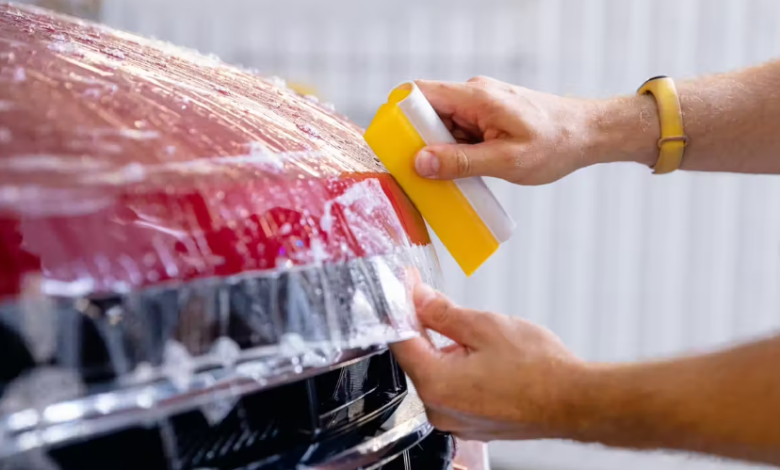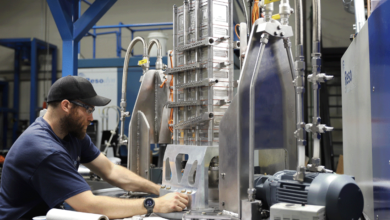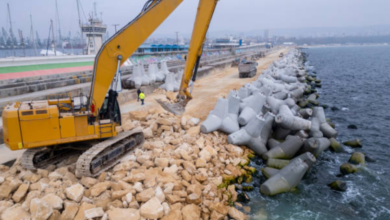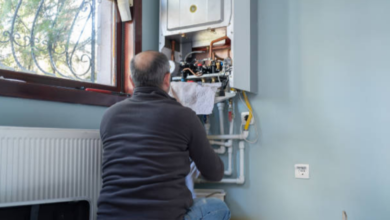What Is Paint Protection Film (PPF) and How Does It Work?

Your car’s paint isn’t just about looks—it’s a key investment that affects resale value and appearance. Everyday driving exposes it to damage from debris, scratches, and contaminants. Paint Protection Film (PPF) offers a high-tech solution, creating an invisible shield to preserve your car’s finish and keep it looking like new.
What is PPF?
Paint Protection Film is a transparent, thermoplastic urethane film designed to shield your vehicle’s painted surfaces from damage. Originally developed by the U.S. military during the Vietnam War to protect helicopter rotor blades from debris, this technology has evolved significantly for automotive applications.
Modern PPF consists of multiple layers working together to provide comprehensive protection. The top layer features a clear coat that resists staining and provides self-healing properties. The middle layer contains the bulk material—a flexible urethane that absorbs impact and prevents damage from reaching the paint. The bottom layer includes an adhesive system that bonds securely to your vehicle’s surface without causing damage during removal.
Professional installers apply PPF to high-impact areas such as the front bumper, hood, fenders, side mirrors, door edges, and door handle cups. Some vehicle owners choose full-body coverage for maximum protection, while others focus on the most vulnerable areas. This clear bra, like those available in Salt Lake City, provides nearly invisible protection that maintains your car’s original appearance while delivering superior defense against everyday hazards.
The film’s optical clarity ensures it won’t alter your vehicle’s color or finish. Quality PPF products are virtually undetectable when properly installed, maintaining the authentic look of your car’s paint while providing robust protection underneath.
How PPF Works
Paint Protection Film functions through several key mechanisms that work together to protect your vehicle’s finish. The film’s impact resistance represents its primary defense mechanism. When road debris strikes the protected surface, the urethane material absorbs and disperses the energy across a wider area, preventing concentrated force from damaging the underlying paint.
The self-healing properties of premium PPF create an additional layer of protection against minor scratches and swirl marks. When exposed to heat—either from the sun or a heat gun—the film’s surface layer flows back together, eliminating light scratches and restoring the smooth finish. This remarkable characteristic means your protection actually improves its appearance over time with proper maintenance.
Chemical resistance plays a crucial role in PPF’s protective capabilities. The film creates a barrier against acid rain, bird droppings, tree sap, road salt, and other corrosive substances that can permanently stain or etch automotive paint. Instead of reaching your car’s finish, these contaminants remain on the film’s surface where they can be safely cleaned away.
UV protection represents another important function of quality PPF. The film filters harmful ultraviolet radiation that causes paint to fade, oxidize, and lose its luster over time. This protection is particularly valuable for vehicles with darker colors or special paint finishes that are more susceptible to sun damage.
The adhesive system ensures the film stays securely in place while allowing for clean removal without residue. Professional-grade adhesives bond to the paint surface without causing damage, and the film can be removed years later if desired, revealing protected paint underneath that looks nearly new.
See also: AI Voiceover Technology and Its Role in Accessibility
Benefits of PPF
Investing in Paint Protection Film provides numerous advantages that extend far beyond simple scratch prevention. The financial benefits alone often justify the initial investment, as PPF helps maintain your vehicle’s resale value by preserving the original paint condition. Cars with well-maintained paint consistently command higher prices in the used car market.
Long-term cost savings represent another significant advantage. PPF eliminates the need for frequent paint touch-ups, polishing, and correction services that would otherwise be necessary to maintain your vehicle’s appearance. The film’s durability means you’ll avoid repeated expenses for paint repair and refinishing over your ownership period.
Maintenance becomes considerably easier with PPF installed. The smooth, non-porous surface resists dirt and contamination, making washing more efficient and effective. Many owners find their vehicles stay cleaner longer and require less intensive cleaning procedures to maintain their appearance.
The peace of mind factor cannot be overstated. Knowing your vehicle is protected allows you to enjoy driving without constantly worrying about paint damage from everyday hazards. You can park with confidence, drive on gravel roads, and navigate construction zones without the anxiety that typically accompanies expensive paint repairs.
Environmental protection extends beyond just physical impacts. PPF shields your paint from acid rain, industrial fallout, insect acids, and other airborne contaminants that can cause permanent damage. This protection is particularly valuable in urban environments where air quality issues can accelerate paint degradation.
Time savings represent an often-overlooked benefit. The reduced need for paint correction services, touch-up work, and intensive detailing means you’ll spend less time dealing with paint maintenance and more time enjoying your vehicle.
Conclusion
Paint Protection Film (PPF) protects your car’s appearance and value with impact resistance, self-healing, and UV defense. Professionally installed PPF is virtually invisible, reduces maintenance costs, and offers long-lasting protection.




